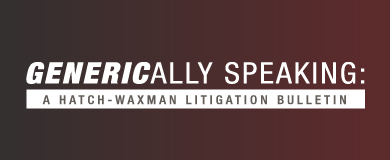- Acumen Powered by Robins Kaplan LLP®
- Affirmative Recovery
- American Indian Law and Policy
- Antitrust and Trade Regulation
- Appellate Advocacy and Guidance
- Business Litigation
- Civil Rights and Police Misconduct
- Class Action Litigation
- Commercial/Project Finance and Real Estate
- Corporate Governance and Special Situations
- Corporate Restructuring and Bankruptcy
- Domestic and International Arbitration
- Health Care Litigation
- Insurance and Catastrophic Loss
- Intellectual Property and Technology Litigation
- Mass Tort Attorneys
- Medical Malpractice Attorneys
- Personal Injury Attorneys
- Telecommunications Litigation and Arbitration
- Wealth Planning, Administration, and Disputes
Acumen Powered by Robins Kaplan LLP®
Ediscovery, Applied Science and Economics, and Litigation Support Solutions
-
June 1, 2022Chambers USA Recognizes Five Robins Kaplan Practice Groups And 17 Lawyers In 2022 Guide
-
June 1, 2022Seasoned Attorney Joins Firm’s Business Litigation Group
-
May 26, 2022Shira Shapiro Named Woman of Promise By The Pearl Society
-
June 3, 202219th Annual Advanced Insurance Law
-
June 9, 2022Building Your Brand: Perspectives and Insights from a Diverse Bar
-
June 10, 2022LGBTQ Legal Services: Transgender Name Change Clinic
-
May 24, 2022Briefly: Seeking Fees and Costs While on Appeal
-
May 19, 202211th Circ. Ban On Service Awards May Inhibit Class Actions
-
May 13, 2022Trademark Applications and the Murky Waters of Subject Matter Jurisdiction
-
June 2, 2022Sandberg Stepping Down as Meta COO After 14 Years
-
June 1, 2022Markets Revert to Recent Form as Pessimism Takes Hold
-
May 27, 2022Unexpectedly Strong Retail Sales Pull Markets Back from the Brink
Find additional firm contact information for press inquiries.
Find resources to help navigate legal and business complexities.
AstraZeneca LP v. Breath Ltd.
To prove obviousness, only a reasonable expectation of success, not a guarantee, is needed.
Summer 2015

Case Name: AstraZeneca LP v. Breath Ltd., 2015-1335, 2015 U.S. App. LEXIS 7525 (Fed. Cir. May 7, 2015)
Drug Product and Patent(s)-in-Suit: Pulmicort Respules® (budesonide inhalation suspension); U.S. Patent No. 7,524,834 ("the '834 patent")
Nature of the Case and Issue(s) Presented: In a prior decision by the Federal Circuit, the court reversed and remanded the district court’s non-infringement findings concerning the ’834 patent based on the district court’s erroneous claim construction. On remand, and following a thirteen-day bench trial, the district court found the asserted claims of the ’834 patent infringed but invalid as obvious. In particular, the district court concluded that a person of ordinary skill in the art, whom the parties agree was motivated to prepare a sterile budesonide composition, would have had a reasonable expectation of successfully doing so with four of five well-known sterilization techniques. AstraZeneca appealed and the Federal Circuit found that the district court correctly determined that the asserted claims of the ’834 patent were invalid for obviousness, and affirmed.
Why Defendant Prevailed: The prior art presented at trial included non-sterile budesonide compositions, sterile compositions of corticosteroids other than budesonide, and five well-known sterilization techniques: sterile filtration followed by aseptic crystallization; moist heat; ethylene oxide; irradiation; and dry heat. Thus, the question before the district court was whether the claimed sterile budesonide compositions were obvious in light of the sterilization methods known in the prior art. The district court found that although each sterilization method had known disadvantages, a skilled artisan “had within her toolbox several methods to address them.” On appeal, AstraZeneca challenged the district court’s decision on grounds that the prior art did not disclose “actual success” using the known sterilization methods. The Federal Circuit held that AstraZeneca mistook the test for obviousness. Obviousness requires a showing that “a skilled artisan would have perceived a reasonable expectation of success in making the invention in light of the prior art.” Thus, “only a reasonable expectation of success, not a guarantee, is needed.”
AstraZeneca also challenged the district court’s analysis of the objective indicia of nonobviousness, including the lack of commercial success, no long-felt but unmet need, no industry skepticism, and any perceived failure of AstraZeneca and others. The Federal Circuit affirmed the district court’s finding that the need was really the nebulized budesonide and that, “had the FDA determined that Pulmicort Respules could be sold in the United States without being sterile, unmet need would have been met.” Similarly, the district court found, and the Federal Circuit likewise affirmed, that the evidence did not demonstrate a connection between the sales of Pulmicort Respules and its characteristic of being sterile. While recognizing that Pulmicort Respules has been very profitable for AstraZeneca in the United States, the district court found that the success was due to factors other than that claimed in the ’834 patent—namely, efficacy, safety of the budesonide molecule, and nebulized delivery. Finally, the Federal Circuit credited the district court’s findings of insufficiency concerning AstraZeneca’s evidence of others’ failures and further discounted AstraZeneca’s evidence of its own failures as relating only to potential disadvantages and commercial feasibility.
Related Publications
Related News
If you are interested in having us represent you, you should call us so we can determine whether the matter is one for which we are willing or able to accept professional responsibility. We will not make this determination by e-mail communication. The telephone numbers and addresses for our offices are listed on this page. We reserve the right to decline any representation. We may be required to decline representation if it would create a conflict of interest with our other clients.
By accepting these terms, you are confirming that you have read and understood this important notice.
